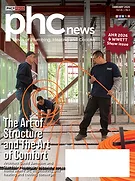For facilities managers interested in reducing the operating costs of their buildings, it’s important to not overlook savings opportunities in the restroom. Factors ranging from energy use to maintenance hours can put an unexpected strain on a building’s operating budget. Facilities managers and designers both can play a role in reducing restroom operating costs with smart decisions about product specification and design. Whether you’re designing a new building or devising a way to save costs in an existing facility, consider the strategic steps you can take to reduce these four potential budget burdens.
Water costs
According to the Environmental Protection Agency (EPA), 40 percent of the water used in hospitals and schools comes from restrooms and domestic (potable) usage. Selecting the right plumbing fixtures is an important step to minimize that expense.
Choose water efficient toilets, showerheads and urinals – and don’t forget to select a reliable metering faucet, like Moen Commercial’s M•PRESS Heavy Duty Metering Faucets. These faucets have a pressure-independent design that ensures consistent water flow and proper shut-off timing, even if water pressure varies throughout the building, and are factory tested to ensure facilities will see dependable water savings throughout the life of the faucet.
Maintenance man-hours
Making cleaning and repairs easier can lead to substantial labor savings. For instance, locating a custodial closet in or near the restroom will reduce time spent transporting materials and cleaning up spills en route. Specifying a reliable metering faucet can offer maintenance savings, too.
The M•PRESS faucet has several features that minimize the time technicians spend replacing or repairing it. It’s built of the highest-quality materials, including a solid cast brass body with a chrome finish that resists even harsh industrial cleaners. A sealed silicone timing mechanism is completely separated from the water source, protected from impurities and clogs, to ensure consistent timing and less maintenance.
Supply costs
To conserve supplies such as hand soap and paper towels, an upfront investment can provide ongoing savings. While the typical folded towel dispenser might be the cheapest option in terms of initial cost, for example, automatic paper towel dispensers can reduce waste by providing a properly sized towel that is less likely to be dropped on the floor. Specifying vandal-resistant plumbing fixtures also can keep costs down by reducing the need for replacement parts such as handles and aerators.
Energy use
Automatic lighting controls, such as occupancy sensors, can help reduce the energy used for lighting throughout commercial buildings. But, their impact may be greatest in the restroom, according to a study by researchers at the Energy Star Buildings Program and Rensselaer Polytechnic Institute. The study found that sensors could save 47 to 60 percent of lighting energy in restrooms, where lights are often left on overnight or during the weekend.
Don’t forget that saving water saves energy, too, since buildings use gas or electricity to heat water. Using low-flow faucets and showerheads, as well as fixtures that shut off automatically, can reduce the load on your water heating equipment — and help make sure your restrooms don’t bust your operating budget.
-200x221.webp?height=200&t=1504015960&width=auto)




